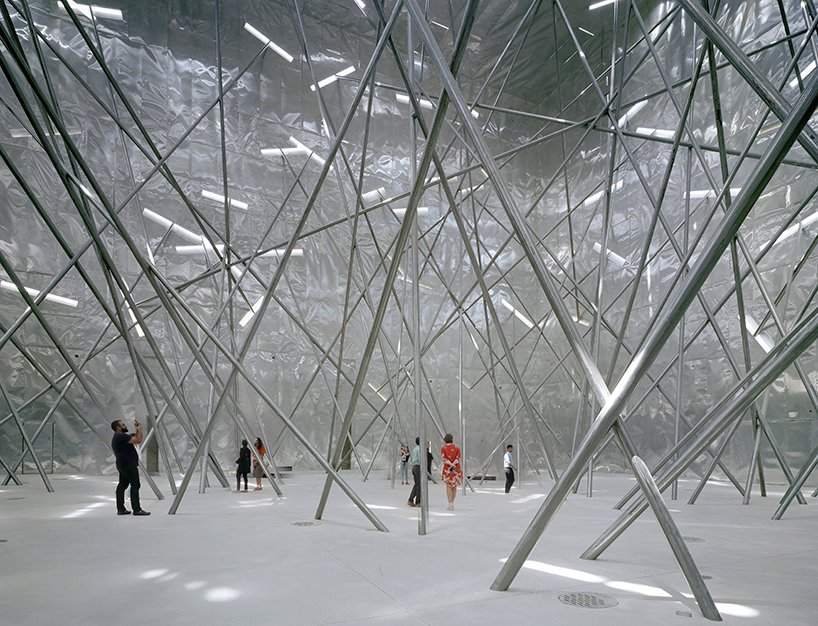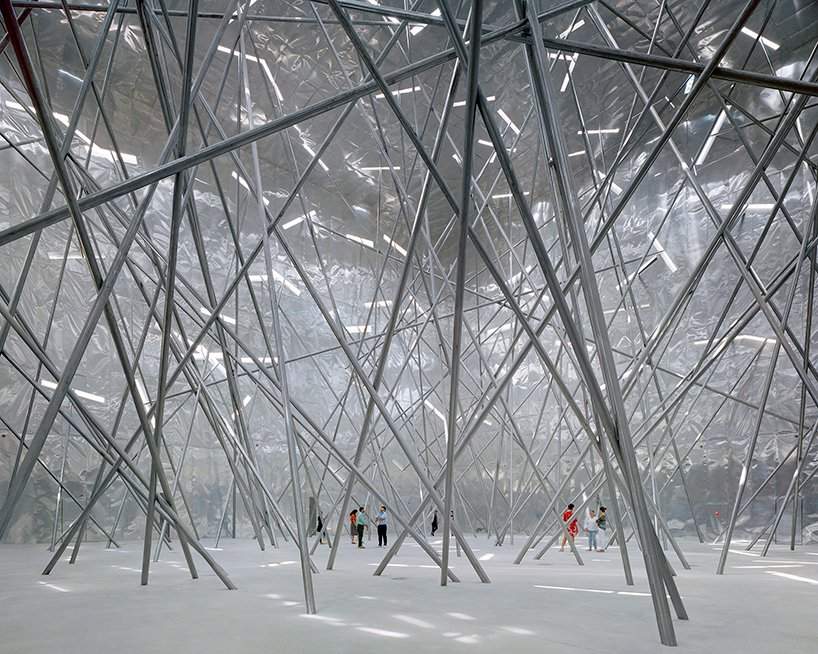Bahrain pavilion by christian kerez in expo 2020 Dubai
On the occasion of the Expo 2020 Dubai, Swiss architect Christian Kerez has designed the Bahrain Pavilion as an immersive web of tilted columns. With a floorplan area of 900 sqm and a height of about 23 m, the pavilion is articulated by numerous slanted columns and beams spreading out unfathomably in all directions. The resulting unusual, futuristic, spatial effect does not refer explicitly to the Kingdom of Bahrain, but allows open fields of association. For example, it can remind some of the floor plan typologies of old palaces in Muharraq, their introverted living spaces, the dense, irregular, traditional ornaments in Bahrain, but also state-of-the-art technologies such as those used in Formula 1.
all images courtesy of Christian Kerez
a singular structural system of tilted columns
In the Bahrain Pavilion by Christian Kerez (see more here), slanted columns penetrate the walls and ceiling, ending outside the building. The placement of the linear windows that resemble the profiles of the beams, reveals the geometrical arrangement of the columns inside. At the same time, the windows allow rays of natural light to permeate the space, forming a connection between the surrounding walls and the columns.
The tilted pillars meet repeatedly in space and when they do, they are welded together. This drastically reduces their buckling length in relation to the actual dimensions of the space, which means that the room can be supported and stiffened solely by filigree standard steel profiles with a diameter of 11 cm. The walls are built with frames made of 14 cm thin U-profiles. Together, they work as one singular structural system.
alteration of dense columns and open vistas
While the thin columns seem extremely dense in overview, it is quite surprising how light and sparingly placed they are, while walking through the pavilion. At first glance, the supporting structure deceptively looks as if it were evenly distributed throughout, but vistas open up repeatedly across the entire expanse of the space. In addition, areas of densely spaced columns alternate with open areas that are completely free of supports. The many open vistas throughout the hall are complemented by an infinite variety of additional views as the eye is drawn up along the supports into the height and expanse of the room to the walls of the hall and beyond via the light slits.
The frames of the enclosing walls are clad in thin, malleable aluminum panels, dissolving the boundaries into multiple reflections. The panels of the exterior cladding also reproduce the thin frame grid underneath through the reflections of the slightly cambered surfaces.
a futuristic spatial effect open to association
In most buildings, the support structure serves the sole purpose of shoring up the building, but in this case it becomes a space-defining, architectural event and a spatial experience that cannot be readily deciphered. It is not illustrative.
The spatial effect is not a direct reference to the Kingdom of Bahrain, but can be reinterpreted in many ways, and is open to multiple associations. The Bahrain Authority of Culture and Antiquities, under the direction of H.E. Sheikha Mai Bint Mohammed Al-Khalifa and her director Noura Al Sayeh, relates this building to Anne Holtrop’s building for the World’s Fair in Milan, for they are convinced that architecture is not only important as an object-like symbol, but above all that it should give visitors a unique architectural and spatial experience. This pavilion will be reconstructed in Manama, the modern business center of Bahrain, entirely in the spirit of sustainability.





